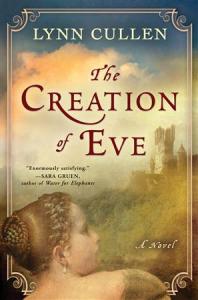Book Talk: Cullen changes book on finding portrait
(Agencies)
Updated: 2010-06-03 08:56
 |
Large Medium Small |

Author Lynn Cullen began writing her latest novel about a despised Spanish king but her discovery of a mysterious portrait changed everything.
Cullen was early in her research about Felipe II of Spain (1527-1598) when she stumbled across a painting of a woman in a fur wrap. The portrait, painted by a barely known female artist, was the inspiration for her new book "The Creation of Eve."
The story plumbs the life of Italian-born Sofonisba Anguissola, who gave up her coveted apprenticeship with Michelangelo after a romantic tryst with another artist threatened to ruin her family. Fleeing possible censure, she accepted a position teaching painting to Spain's teenage queen, Elisabeth.
Cullen, who is known for her children's books based on historical European figures such as Marie Antoinette, spoke with Reuters about how research can dramatically alter the course of a book and her fascination with the fickleness of human character.
The book is Cullen's first adult fiction.
Q: Why did you choose Sofonisba Anguissola as your subject?
A: "The book started out three years earlier being a mystery about whether Felipe was a good guy a bad guy ... That fell apart once I did research. He turned out to be a nice guy. He had just been vilified throughout history, starting with the Dutch and the English who were his enemies.
"Pretty early into the research, I saw a picture of the lady in the fur wrap ... I read that she'd painted this painting and she was a lady-in-waiting to the queen. You have to be completely open and let things surprise you and follow that."
Q: What might surprise readers about Sofonisba?
A: "I look at Sofi as an unreliable narrator. That's one of the big points of the book -- you see things, you interpret it in your way, but it might be the wrong way.
"I was heavily influenced by "Wuthering Heights" because there's an unreliable narrator in that. I read it several times as I was writing this book. I love the idea that as a reader you're fed information, just as in real life. You get certain information and you can only process what you see, but there might be other things to it.
"I like for the reader to be surprised. I like to be surprised. My favorite book is "Heat Wave" by Penelope Lively. I am drawn to these books where things are not as they appear."
Q: What did you carry over from your first idea?
A: "In this case, it was exploring the idea of people judging others by appearances, and not really being able to understand each others' hearts.
"I'm also fascinated that people you're super close to, your own husband, your sister, you can't really know their thoughts."
Q: What's the meaning of your title?
A: "It comes from the Sistine Chapel. In the beginning (of the book) Sofonisba is touring the Sistine Chapel and she sees "The Creation of Adam" -- the painting we all know so well, with God reaching out. It's such a powerful painting.
"And then next to that, which no one notices, is "The Creation of Eve." It's a very subdued picture. My problem with it, and Sofonisba's problem with it, is that Eve is so pale.
"One of the tricks used by art to catch a viewer's eye, is putting the darkest dark of the painting next to the lightest light and the eye immediately goes there first.
"(On the Sistine Chapel ceiling) the darkest dark and the lightest light lead you right to Adam. I was bothered by the neglect of Eve. In the book, Eve becomes symbolic of all women trying to find themselves."
Q: How did you conduct your research?
A: "I've gone to Spain about five times now. I go to smell the air and eat that food. That's fun. You just have to go to a place and be where those people were. It's very moving -- and it makes a great vacation."